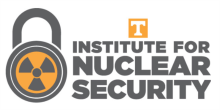Author ORCID Identifier
Anthony Galindo:
https://orcid.org/0000-0001-9443-1036
Craig Marianno:
https://orcid.org/0000-0001-8531-3951
Abstract
Laboratory experiences for online students are very limited. To fill this gap, educators in the Department of Nuclear Engineering at Texas A&M University developed a series of radiation detection experiments for their remote students. Radiation detection is only one piece of nuclear security. The objective of the current research is to describe the development and execution of three online laboratories that investigate the basic application of physical security sensors that use light, ultrasonics, and heat to detect adversaries. This laboratory complements lecture material from the department’s Nuclear Security System and Design course. Using the Remote Desktop Application, students connect to a laboratory computer at Texas A&M to control the apparatus and record data. The sensors from a LEGO MINDSTORMS EV3 Education Core set were employed because of their ease of connectivity and their ability to show in a simplistic way how more complex security systems use light, ultrasonics, and heat. Additionally, LabVIEW software was used to control ethernet stepper motors for lateral and rotary motion to move sensors and other apparatus. The three laboratories are described in detail in addition to their learning objectives and results.
DOI
https://doi.org/10.7290/ijns930937
Recommended Citation
Galindo, Anthony R. and Marianno, Craig
(2023)
"Remote Laboratory for Nuclear Security Education,"
International Journal of Nuclear Security:
Vol. 8:
No.
1, Article 8.
https://doi.org/10.7290/ijns930937
Available at:
https://trace.tennessee.edu/ijns/vol8/iss1/8
Creative Commons License

This work is licensed under a Creative Commons Attribution 4.0 International License.


